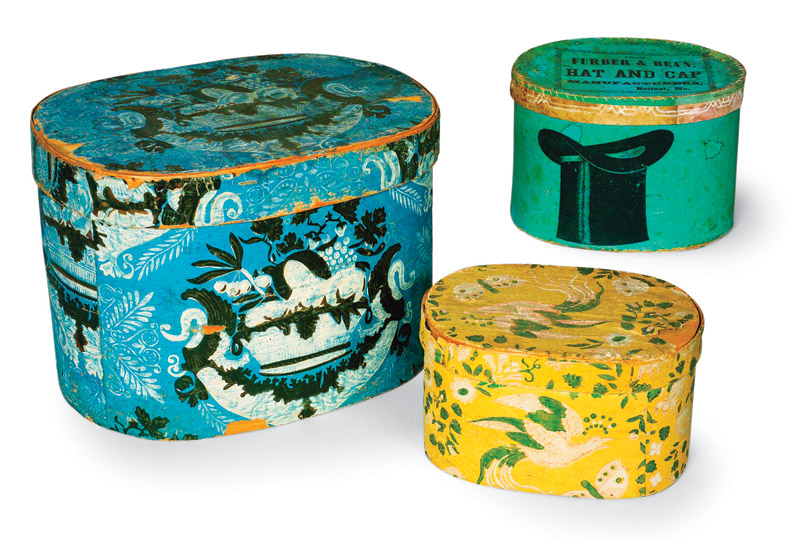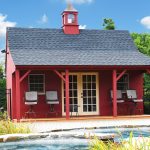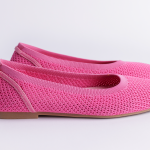Antiques: Hatboxes
While growing up, I shared a room with my very neat and organized sister. I was the bane of her existence. Artsy and disheveled, I provided the perfect foil to her tirade of tidiness. “A place for everything, and everything all over the place” was my motto. I favored pretty; she liked practical. I liked […]

Coffee By Design | Portland, Maine
Photo Credit : Katherine KeenanWhile growing up, I shared a room with my very neat and organized sister. I was the bane of her existence. Artsy and disheveled, I provided the perfect foil to her tirade of tidiness. “A place for everything, and everything all over the place” was my motto.
I favored pretty; she liked practical. I liked fancy; she opted for function. Now, years later, I think I’ve found something we can both agree on: bandboxes by Hannah Davis.
Hannah Davis was born in Jaffrey, New Hampshire, in 1784, the sole offspring of gutsy pioneers. The deaths of her father and then her mother left Davis, a 34-year-old spinster, alone and nearly penniless. She faced the daunting task of supporting herself in a small rural town surrounded by wilderness: no small feat for a man in the early 19th century, let alone a woman.
Boxes to store hats, collar bands, and other personal sundries were necessary accoutrements for men and women of the time, so Davis summoned her Yankee spirit and in 1818 began a cottage industry fashioning boxes out of spruce and pine, covered in popular wallpaper patterns.
The process began with the rawest of materials. She roamed the woods near her home, selected the tallest trees she could find, and then hired local hands to fell and deliver them. She invented a foot-powered slicing machine to shave off long vertical strips of green wood. She bent the strips and molded them to form the sides of the boxes and used pine discs for the bottoms and covers. She affixed wallpaper to the outside surfaces, newspaper to line the inside.
The boxes were functional, versatile, and affordable, selling for 12 cents for a trinket-size one just 5 inches high, to suitcase-size examples for 50 cents each. Best of all, they were beautiful–adorned with flowers, fruits, ribbons, wildlife, historic figures, pastoral scenes, even fantastic landscapes. Hannah Davis boxes struck a chord with young New England women, adding a splash of color and fancy to an often-austere Early American existence.
Davis first bartered goods and services for the boxes or sold them to local merchants, but soon found she needed to expand her market. Loading up her wagon with boxes and taking them on the road, she discovered she could make more of a profit by selling them directly to young factory girls in the mill towns along the Merrimack River. Word of her well-made boxes spread, and they soon became fixtures in homes across New England.
“Hannah Davis wasn’t the only person making these wallpapered boxes,” notes LaGina Austin, specialist in American furniture and decorative arts at Skinner Auctioneers, “but if one can attribute a box to Davis, its value immediately goes up.” That’s especially true for examples that carry Davis’s printed label inside their covers: “Warranted Nailed BAND BOXES manufactured by HANNAH DAVIS, East Jaffrey, N. H.”
Prices at auction range from a few hundred dollars to several thousand. Most desirable are the smallest trinket boxes and the largest, grandest examples. Austin cautions that as with any paper collectible, condition is vitally important; fading, tears, stains, foxing, or mold may lessen a box’s value significantly, so opt for near-perfect examples.
I’m going to keep my eye out for a Hannah Davis bandbox–a peace offering to my sister, perhaps. Wild with decoration, yet simple in form and function, they strike the halfway point between my world and hers: They’re pretty neat.
Catherine Riedel represents Skinner Auctioneers and Appraisers of Boston and Marlborough, Massachusetts. 617-350-5400, 508-970-3000; skinnerinc.com
Vermont’s Shelburne Museum (open mid-May to mid-October) and the Melville Academy Museum (open Saturday and Sunday afternoons in July and August) in Jaffrey Center, New Hampshire, boast fine collections of Hannah Davis bandboxes. For more information, visit: shelburnemuseum.org and jcvis.org







